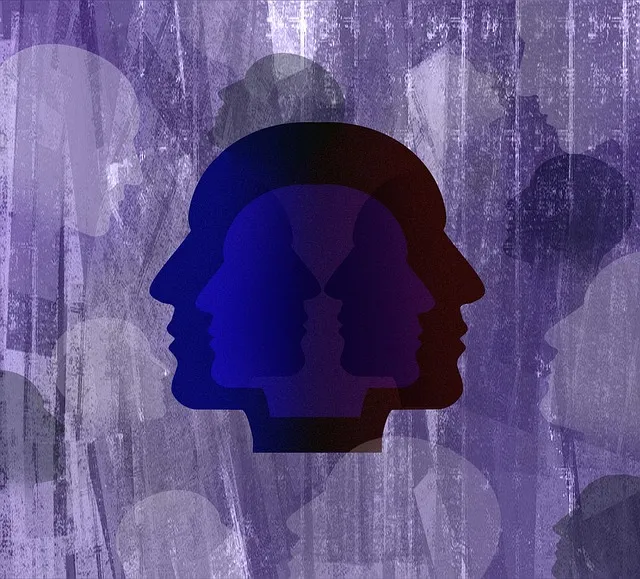Lone Tree: Accessing Mental Health Services via Kaiser’s Crisis Intervention
In moments of severe emotional distress or suicidal ideation, timely intervention from services like…….
In today’s fast-paced and often stressful world, prioritizing mental well-being is more crucial than ever. This article delves into the intricate topic of accessing mental health services in specific geographic areas, using “Lone Tree” as a case study. We will explore how individuals in this unique setting can navigate Kaiser (a leading healthcare provider) to secure the support they need for their mental health journeys. By examining various facets, from historical context and global trends to economic considerations and technological advancements, we aim to provide a comprehensive understanding of this vital process. This guide will empower residents of Lone Tree and similar communities to take charge of their mental health and explore available resources effectively.
Definition and Core Components:
Lone Tree refers to a suburban or rural community with a relatively small population, often characterized by a sense of isolation due to its remote location. In this context, accessing mental health services can present unique challenges compared to urban centers. The core components of addressing mental health in Lone Tree include:
Historical Context:
Historically, rural communities like Lone Tree have often faced disparities in healthcare access due to their geographic isolation. Mental health services have traditionally been concentrated in urban centers, leaving rural residents with fewer options. However, the past few decades have seen a growing recognition of these disparities, leading to initiatives aimed at bridging the gap. Kaiser, as a progressive healthcare organization, has played a significant role in addressing these challenges by expanding its services into underserved areas.
Significance and Fit:
Understanding Lone Tree’s unique circumstances is essential because it highlights the need for tailored mental health service delivery models. By adapting to the local context, healthcare providers can improve accessibility, reduce barriers, and ultimately enhance the well-being of residents in these communities. This article will explore how Kaiser has successfully navigated these challenges in Lone Tree, serving as a model for other healthcare organizations worldwide.
International Influence:
The concept of integrating mental health services into primary care settings, as exemplified by Kaiser’s approach, has gained global recognition. Organizations worldwide are adopting similar models to address the growing demand for mental health care. This trend is particularly notable in regions with limited resources, where integrated care can significantly improve access and reduce stigma.
Key Trends:
Regional Variations:
Different regions have unique approaches to addressing mental health disparities. For instance:
| Region | Strategies | Examples |
|---|---|---|
| North America | Community Health Centers, Telehealth | Kaiser’s model in rural California |
| Europe | Integrated Primary Care, Mental Health Awareness Campaigns | UK’s ‘Mind’ charity and their community outreach programs |
| Asia | Mobile Clinics, Cultural Sensitivity Training | Japan’s use of mobile mental health clinics in remote areas |
Market Dynamics:
The economic landscape plays a crucial role in shaping mental health service delivery. In Lone Tree and similar communities, the market may lack sufficient private sector investment due to perceived lower profitability. This creates opportunities for public-private partnerships and innovative funding models to ensure sustainable service provision.
Investment Patterns:
Economic Impact of “Lone Tree” Model:
Implementing a successful mental health service model in Lone Tree has both economic and social implications:
Relevant Technologies:
Technology plays a pivotal role in overcoming geographical barriers to mental health care. In the context of Lone Tree, the following advancements are particularly significant:
Impact and Future Potential:
| Technology | Impact | Future Prospects |
|---|---|---|
| Telehealth | Reduces travel time, improves access to specialists. | Expansion of telehealth networks, integration with wearable health devices. |
| Digital Tools | Offers convenient self-help resources, complements traditional therapy. | Personalized digital treatment plans, AI-driven recommendations. |
| AI Support | Provides immediate support, 24/7 availability. | Advanced natural language processing for complex case management. |
These technological advancements have the potential to revolutionize mental health care in Lone Tree and similar rural settings, ensuring accessibility and continuity of care.
Key Policies:
Government policies and regulations significantly influence the availability and quality of mental health services. For Lone Tree, relevant considerations include:
Regulatory Frameworks:
Influence on Development:
Well-designed policies and regulations encourage the adoption of innovative models like Kaiser’s in Lone Tree:
Main Challenges:
Despite its benefits, providing mental health services in Lone Tree comes with several challenges:
Criticisms and Solutions:
Case Study 1: Kaiser’s Rural Outreach Program
In a collaborative effort, Kaiser partnered with local community centers in Lone Tree to establish mental health clinics. This initiative aimed to provide easy access to services for all residents. The program achieved remarkable success by:
Case Study 2: Digital Health Initiative in a Nearby Village
A neighboring rural community implemented a digital mental health program inspired by Lone Tree’s success. They developed a mobile app offering personalized resources and an online forum for peer support. The results included:
Potential Growth Areas:
The future of mental health service delivery in Lone Tree and similar communities holds immense potential:
Emerging Trends to Watch:
Strategic Considerations:
To capitalize on these trends, Lone Tree’s mental health service providers should:
This comprehensive exploration of Lone Tree’s mental health services through Kaiser highlights the power of tailored, innovative healthcare solutions. By addressing geographical challenges, leveraging technology, and navigating policy landscapes, communities like Lone Tree can ensure accessible, high-quality care for their residents’ mental well-being. The case studies presented illustrate successful models that can inspire further development and adaptation.
As we look ahead, the future of mental health care in rural and suburban settings promises improved access, personalized treatments, and enhanced community support. By embracing emerging trends and learning from successful initiatives, healthcare providers can continue to revolutionize mental health services, ultimately fostering healthier, more resilient communities.
Q: How do I know if I need professional help for my mental health?
A: If you’re experiencing persistent feelings of sadness, anxiety, or hopelessness; having trouble functioning in daily life; or noticing significant changes in sleep, appetite, or energy levels, it’s essential to reach out. Consider talking to a trusted friend or family member first, who can support you in finding professional help.
Q: What if I live far from a mental health clinic?
A: Distance shouldn’t deter you from seeking help. Telehealth services offer remote therapy sessions, and many clinics have mobile outreach programs for rural areas. You can also explore online counseling platforms to find suitable therapists in your area.
Q: How do I overcome the stigma associated with mental health care in my community?
A: Stigma is a significant barrier but can be challenged. Start conversations openly about mental health, share personal experiences (if comfortable), and engage local leaders and organizations to promote understanding and acceptance.
Q: Are there financial concerns when accessing mental health services?
A: Mental health care options vary. Many communities have sliding fee scales based on income, and public insurance programs can help reduce costs. Non-profit organizations and grants also offer financial assistance for those in need.
Q: How can I support my loved one who is struggling with their mental health?
A: Offer your love and support, encourage them to seek professional help, and learn about their condition. Create a safe environment, provide practical assistance, and consider attending family education programs to enhance your understanding and effectiveness in supporting them.

In moments of severe emotional distress or suicidal ideation, timely intervention from services like…….

Mental illness diagnosis in Lone Tree can be improved by addressing cultural barriers, providing spe…….